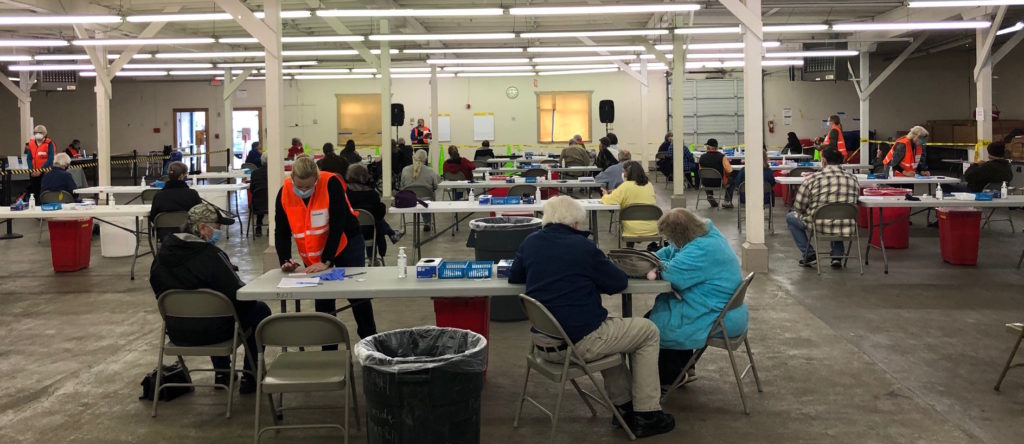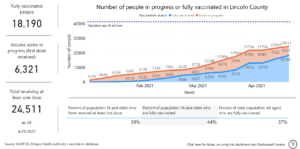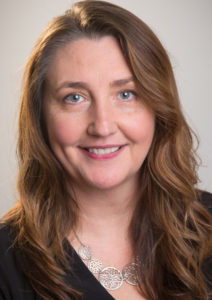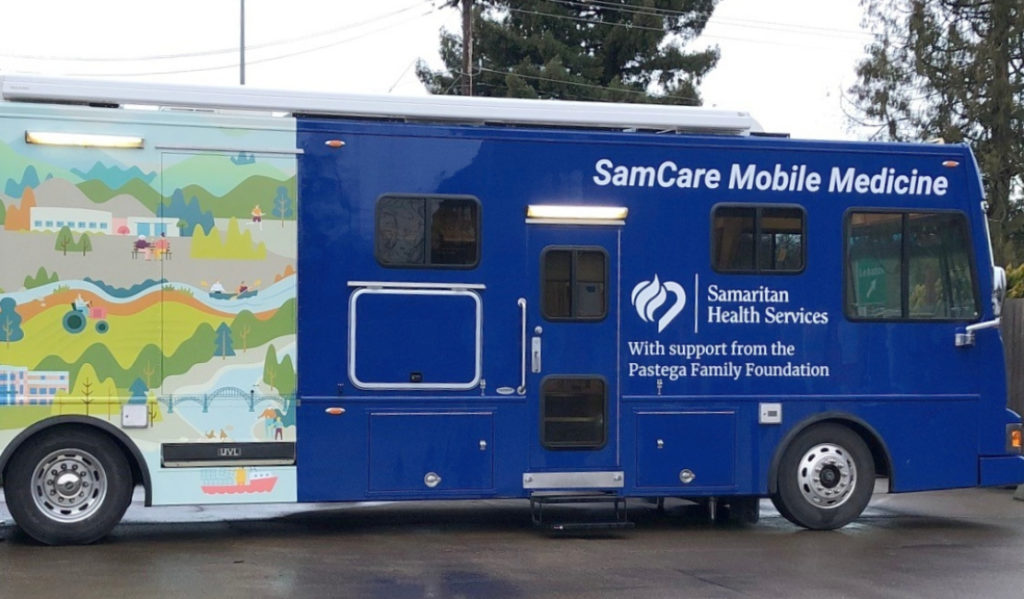
By QUINTON SMITH/YachatsNews.com
Lincoln County, which has been an Oregon leader in getting its residents COVID-19 vaccines, has seen a sharp drop off in the number of people wanting the shots.
To try to reverse that trend, the county and its medical partners are expanding their communication campaigns and outreach, allowing walk-ins at all clinics, taking clinics to smaller communities and high schools, and asking businesses to host clinics for their workers.
The problem developed so suddenly that the county and its partners did not use one-third of their vaccine supply – 1,020 doses – last week as appointments went unfilled.

As a result, Lincoln County Public Health ordered 200 fewer doses from the state this week, cancelled a clinic Tuesday in Lincoln City, and will have only a few first-dose appointments available at its large clinic at the county fairgrounds in Newport.
Outside of vaccinations available at pharmacies and the Siletz tribal clinic, there are just four first-dose clinics this week in the county where normally there have been eight.
Samaritan Health Services, which has been offering first-dose vaccinations every Friday and Saturday morning in Newport, also had widespread openings last week. It announced Wednesday it will offer walk-in vaccinations at its Friday and Saturday clinics.
The county’s and Samaritan’s second-dose clinics – expected to handle 1,000 vaccinations this week – are not affected.

“We’ve dropped a bit in our vaccination rate,” LCPH spokeswoman Susan Trachsel told county commissioners Monday. “We’ve seen a slowdown in our vaccination rate … we have much fewer people coming in this week.”
The trend is not unique to Lincoln County. It’s being seen across much of Oregon and the country as people eager, eligible and available to be vaccinated finish their doses and those more hesitant – or resistant – and with less flexible schedules do not.
Fourteen rural Oregon counties last week asked the Oregon Health Authority to lower or stop vaccine distribution to them as demand began to dry up. Those doses were redirected to more populated areas where there is still higher demand.
Still, Lincoln County currently has the second highest vaccination rate in the state; neighboring Benton County is first. As of Monday, the OHA said 24,500 county residents have been vaccinated – 59 percent of the population over the age of 16 eligible for them.
To reach a goal of having 80 percent of 33,000 eligible residents vaccinated, the county and its partners need to get doses to 9,000 more people.

Fighting against the drop off
County health workers and their partners knew the drop off would happen.
“The people who have been waiting or were eager are done,” Trachsel told YachatsNews.
Now the county and others have to convince a whole other group – people unable to manage the scheduling system, people who can’t leave their jobs to get a shot, or people wary of the vaccine – to get vaccinated.
“We’re at that final phase, or push, which is the hardest,” Trachsel said.
To encourage more vaccinations, the county is:
- Offering clinics in smaller communities like Yachats this week, and hopefully soon in Toledo;
- Opening all clinics to walk-in, if there are vaccines available;
- Mailing 23,000 flyers to every address or Post Office box in the county encouraging people to get vaccinated;
- Working with the Lincoln County School District to set up clinics in its four high schools; more than 50 students were vaccinated last week at Newport High School.
- Providing vaccines to the Olalla Center and a Newport church so they can hold clinics for Spanish speakers, indigenous from Guatemala, and the LGBTQ community; and
- Asking businesses or business groups to arrange a visit by Samaritan’s mobile medical van to vaccinate employees.
“We think we’ve got everyone who will travel to a clinic,” Trachsel said. “These are our last ways to get to people who can’t get to the mass clinics.”
The county is also fighting what epidemiologists are calling “vaccine hesitation” – people who are skeptical, for whatever reason, that they need, want, or can get a vaccine.
The federal Center for Disease Control estimates hesitation down to the county level across the United States. In Lincoln County, the CDC estimates that 17 percent of the population is hesitant. In parts of Wyoming, for example, the CDC estimates the rate is 32 percent, down to 8 percent in the San Francisco bay area.



